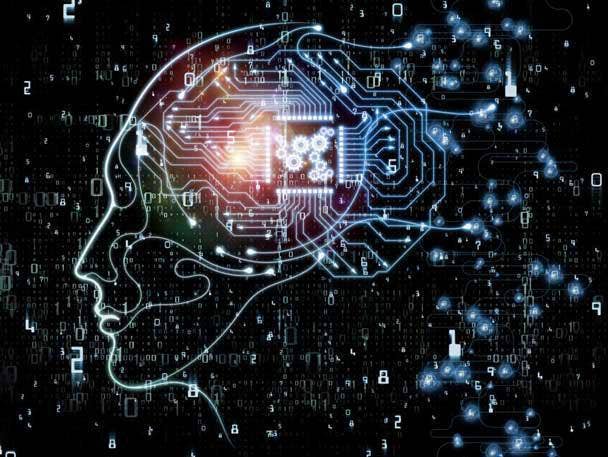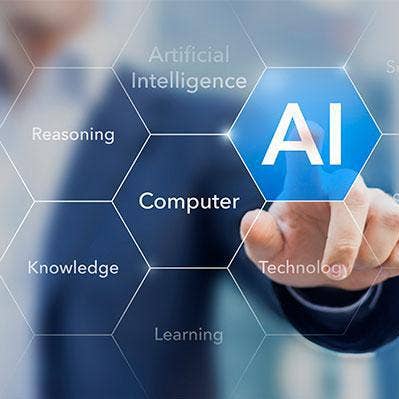5 New ‘Bold’ Google Cloud, Workspace AI Offers: Thomas Kurian
Google Cloud unveils five new artificial intelligence capabilities today including a new API, dubbed PaLM, as well as new generative AI capabilities for Workspace.

Google Cloud CEO Thomas Kurian says his company is “at a pivotal moment” in its artificial intelligence journey as the cloud giant unveils five new AI offerings today, including an API called PaLM and new generative AI capabilities for Workspace.
“Developers and businesses can now try new APIs and products that make it easy, safe and scalable to start building with Google’s best AI models through Google Cloud and a new prototyping environment called MakerSuite,” said Google Cloud’s CEO Kurian in a blog post today. “In Google Workspace, we’re introducing new features that help people harness the power of generative AI to create, connect and collaborate.”
The news comes as generative AI products like OpenAI’s ChatGPT has taken the world by storm by giving AI-infused collaboration tools into the hands of consumers. Google Cloud said all the new AI features launched today will eventually become generally available for customers.
[Related: CloudWerx On Google Cloud’s ‘Powerful’ New Licensing, Pricing]
Thomas Kurian ‘Excited’ By Potential Of Generative AI
Mountain View, Calif.-based Google Cloud is the cloud computing business of parent company Google. Google Cloud is currently on a $29 billion annual run rate.
Kurian said Google has been investing in AI for years with the goal of making AI accessible to everyone. Today’s unveiling of new AI tools is part of Google’s larger mission to become a market leader in artificial intelligence.
“We’re so excited by the potential of generative AI, and the opportunities it will unlock — from helping people express themselves creatively, to helping developers build brand new types of applications, to transforming how businesses and governments engage their customers and constituents,” said Thomas Kurian. “Our goal is to continue to be bold and responsible in our approach and partner with others to improve our AI models so they’re safe and helpful for everyone.”
CRN breaks down the five biggest AI launches Google Cloud unveiled on Tuesday which includes:
*Google MakerSuite
*PaLM API
*Google Workspace
*Generative AI App Builder
*Generative AI Support In Vertex AI

PaLM API
Google Cloud’s PaLM API is a new developer offering to make it easier and safer to experiment with Google’s large language models.
The PaLM API can be used for a variety of applications and provides access to models that are optimized for multi-turn use cases— such as content generation and chat, and general purpose models that are optimized for areas such as summarization and classification.
With embeddings generated through the PaLM API, developers will be able to build applications with their own data or on top of external data sources. Embeddings can also be used in downstream applications built with TensorFlow, Keras, JAX, and other open-source libraries.
Google’s infrastructure supports PaLM API so users don’t have to worry about hosting or serving. Select developers can access the PaLM API today.
“We’re making an efficient model available, in terms of size and capabilities, and we’ll add other sizes soon,” said Kurian. “The API also comes with an intuitive tool called MakerSuite, which lets you quickly prototype ideas and, over time, will have features for prompt engineering, synthetic data generation, and custom-model tuning — all supported by robust safety tools.”

Google MakerSuite
Alongside the new PaLM API, Google is releasing a tool that lets developers start prototyping quickly and easily: MakerSuite.
The new prototyping tool enables users to iterate on prompts, augment dataset with synthetic data, and easily tune custom models.
When users are ready to move to code, MakerSuite will let you export your prompt as code in your favorite languages and frameworks, such as Python and Node.js. Google’s infrastructure supports MakerSuite so users don’t have to worry about hosting or serving.
Google said although generative models offer developers out-of-the-box functionality, but for specialized tasks, tuning leads to better results.
“Our tooling will enable developers to leverage parameter-efficient tuning techniques to create models customized to their use case. And with MakerSuite, you’ll be able to quickly test and iterate on your tuned model right in the browser,” said Scott Huffman, vice president of engineering at Google, in a blog post.

Generative AI New Features In Google Workspace
Google said its now making it possible for Workspace users to harness the power of generative AI to create, connect and collaborate like never before. Today, the company introduced its first set of AI-powered writing features in Google Docs and Gmail.
“In Gmail and Google Docs, you can simply type in a topic you’d like to write about, and a draft will be instantly generated for you,” said Kurian.
“So if you’re a manager onboarding a new employee, Workspace saves you the time and effort involved in writing that first welcome mail. From there, you can elaborate upon or abbreviate the message or adjust the tone to be more playful or professional — all in just a few clicks,” Kurian said.
The new embedded generative AI in Docs and Gmail will help users write anything—from job descriptions to drafting invitations to events—with users only having to type in the topic they want Workspace to write about.
Additionally, Google’s new AI capabilities can help you rewrite a topic based on what tone or mood you want, including a new ‘I’m feeling lucky’ option for Gmail that lets AI try out “a new playful voice,” the company said. These new Google Workspace AI capabilities will be rolled out to testers in the coming weeks.
Google also said it will be launching new Workspace generative AI capabilities for Meet, Chat and Sheets in the near future.

Generative AI Support In Vertex AI
Google Cloud is enabling generative AI support for Vertex AI, which is the company’s machine learning (ML) platform for training and deploying ML models and AI applications.
“Developers and businesses already use Google Cloud’s Vertex AI platform to build and deploy machine learning models and AI applications at scale. We are now providing foundation models, initially for generating text and images, and over time with audio and video,” said Kurian. “Google Cloud customers will have the ability to discover models, create and modify prompts, fine tune them with their own data, and deploy applications that use these powerful new technologies.”
The new generative AI support in Vertex AI gives teams access to foundation models from Google and others, letting users build and customize atop these models on the same platform they use for homegrown ML models and MLOps.
Generative AI support in Vertex AI offers a simple path for data science teams to take advantage of foundation models like the new PaLM API, in a way that provides them with the most choice and control. This includes the ability to easily access PaLM API on Vertex AI to immediately address use cases such as content generation, chat, summarization, classification, and more.
Over time, Vertex AI will support open-source and third-party models, Google said.

Generative AI App Builder
Google Cloud unveiled today the Generative AI App Builder, which Google says is now the fastest way for developers to jumpstart the creation of AI apps such as bots, chat apps, digital assistants and custom search engines, with limited technical expertise required.
Developers have API access to Google’s foundation models and can use out-of-the-box templates to jumpstart the creation of AI gen applications in sometimes just a few minutes.
“Businesses and governments also want to build their own AI-powered chat interfaces and digital assistants. To enable this, we are introducing Generative AI App Builder, which connects conversational AI flows with out of the box search experiences and foundation models—helping companies build generative AI applications in minutes or hours,” said Google Cloud’s CEO Kurian.
Generative AI App Builder gives users direct API access to foundation models and out-of-the-box templates for use cases such as search, support, product recommendations and discovery, and media creation. Additionally, pre-built connectors let developers integrate their data with the intelligence of foundation models, all while keeping data private.